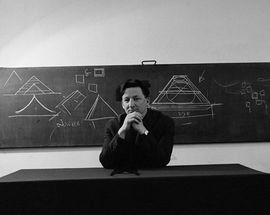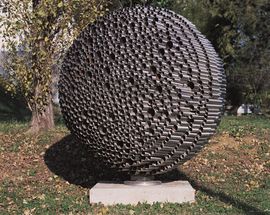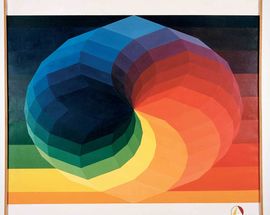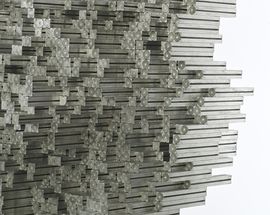Richter - Rebel with Vision, Retrospective Exhibition
Oct 10 - Dec 10 2017
Avenija Dubrovnik 17
Born in Sveti Ivan Zelina close to Zagreb, Richter was both a local man whose influence is deeply felt in Croatian art and culture and a man of international significance and spirit. He “had a deeply ingrained belief in human scientific, cultural and spiritual progress and the possibility of enhancing the conditions of human life” (www.richter.com.hr/eng).
In the pre-war period he was interested in the work of Russian avant-garde artists and architects Vladimir Tatlin and El Lissitzky, German expressionist architect Mendelson and Le Corbusier. Following World War II, during which he was part of the anti-fascist movement, he started to work in architecture and the design of pavilions for exhibitions. Alongside this he developed as a painter, sculptor, illustrator and graphic designer, always remaining faithful to a systematic, holistic and multidisciplinary approach to his art.
If you love modern architecture, the avant-garde and graphic design you cannot fail to be moved by Richter’s powerful, cerebral works which inspire awe with their geometry and balance.
Until now there has not been an exhibition which presents Richter’s complete architectural and artistic opus, which is why an upcoming exhibition at the Museum of Contemporary Art to mark the 100th anniversary of his birth is a great opportunity for connoisseurs of Croatian modern art and newcomers to Richter’s work alike to discover the breadth and depth of his vision in the context of European 20th century modernism. A great many exhibits will be on display to the public for the first time, making this exhibition particularly worth visiting.
Helpfully, the exhibition catalogue will be in Croatian and English and will contain articles by Croatian experts on art history and architecture who have studied Richter’s opus for several years.
This exhibition is part of a project by the Museum focused on the artistic movements of the 1950s and 1960s.
Where to see Richter’s architecture
Since a good portion of Richter’s designs were for exhibition pavilions, far more of his designs exist on paper than have survived in real life. And sadly, some of his wonderful designs were never built, such as the Museum of Evolution in Krapina and the Museum of the Revolutions of the Peoples of Yugoslavia in Belgrade, Serbia. A splendid example of his work is “Villa Zagorje”, the Presidential Palace in Zagreb commissioned by Tito, designed by Richter and Kazimir Ostrogović and completed in 1964. It still houses the Office of the President and it’s a pity it is not open to the public since it is a wonderful blend of clean, modern and dramatically sweeping organic lines enlivened by a good deal of colour and humour. If you happen to be travelling to eastern Slavonia you might visit the Saponia factory in Osijek, but unfortunately it was badly damaged in the war in the 1990s. Happily though, Richter and his wife Nada Kareš-Richter donated their family home, a villa designed by Richter himself, together with works by Richter dating from 1964 to 1979, to the City of Zagreb. Today this comprises the Richter Collection which is open to the public on Wednesdays and Saturdays 11:00-16:00.
Date
Venue
Open 11:00 - 19:00. Sat 11:00 -18:00, Sun 11:00 - 18:00, Closed Mon.
Oct
10
2017
- Dec
10
2017
Contemporary Art Museum
Avenija Dubrovnik 17
Avenija Dubrovnik 17








